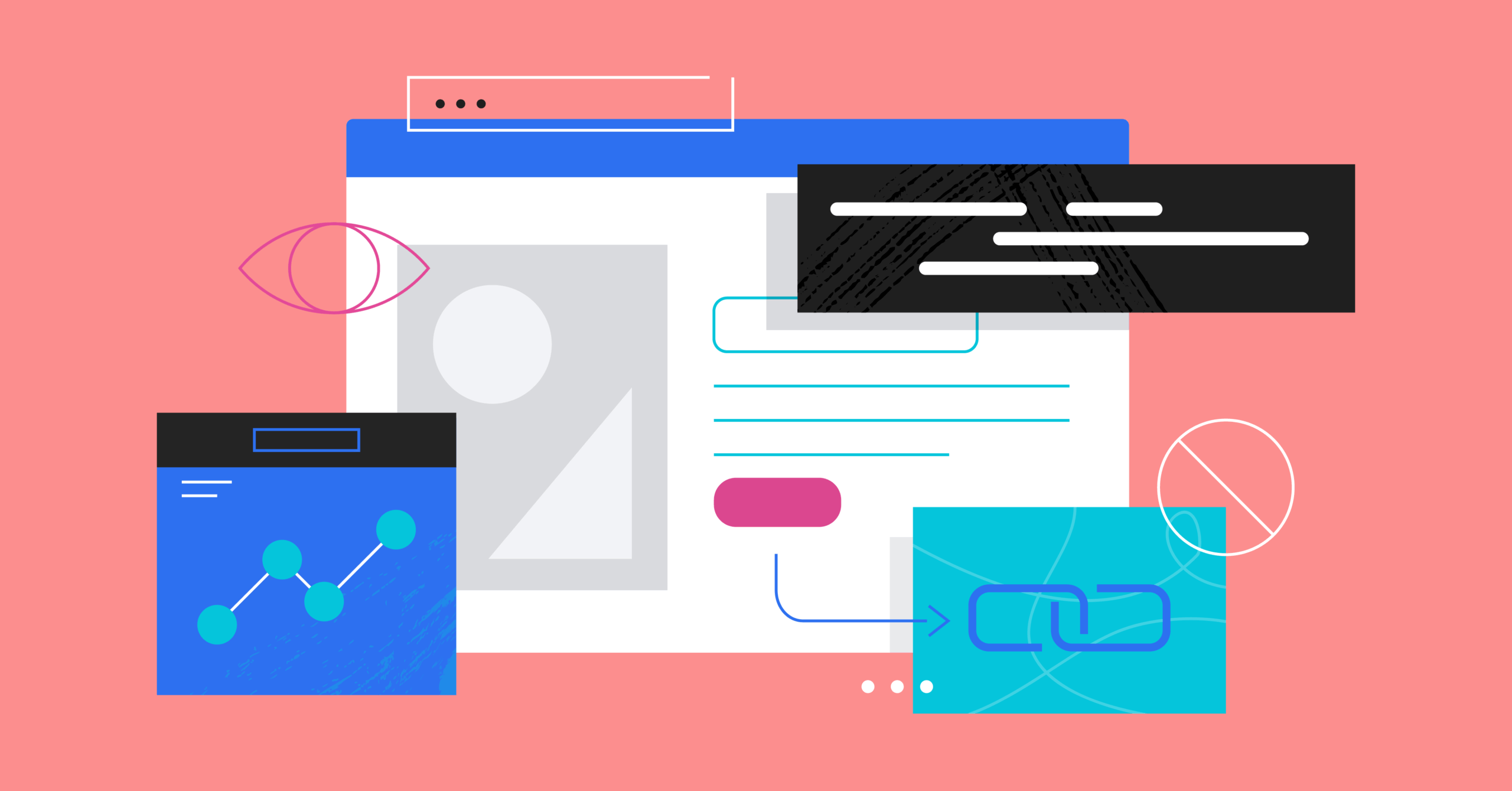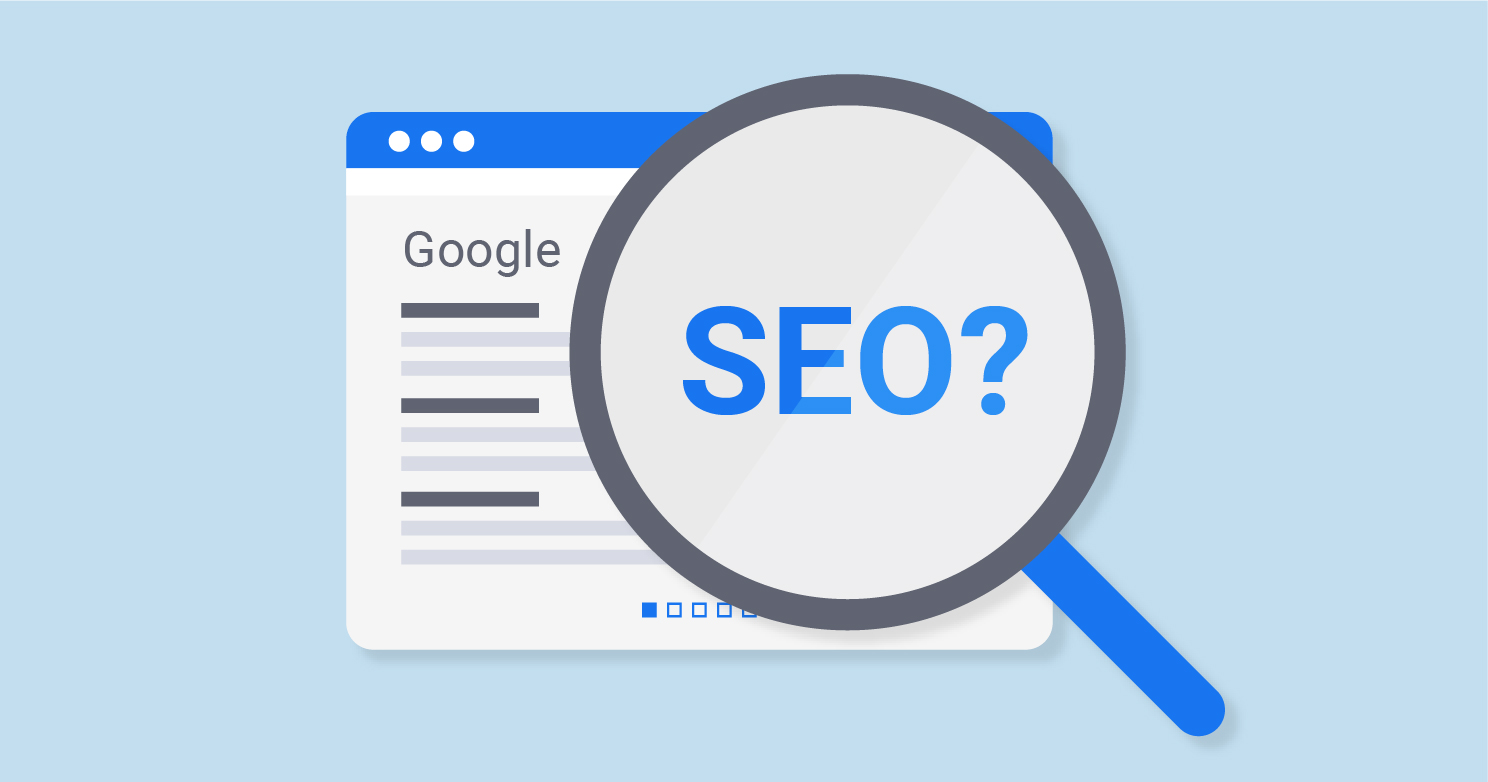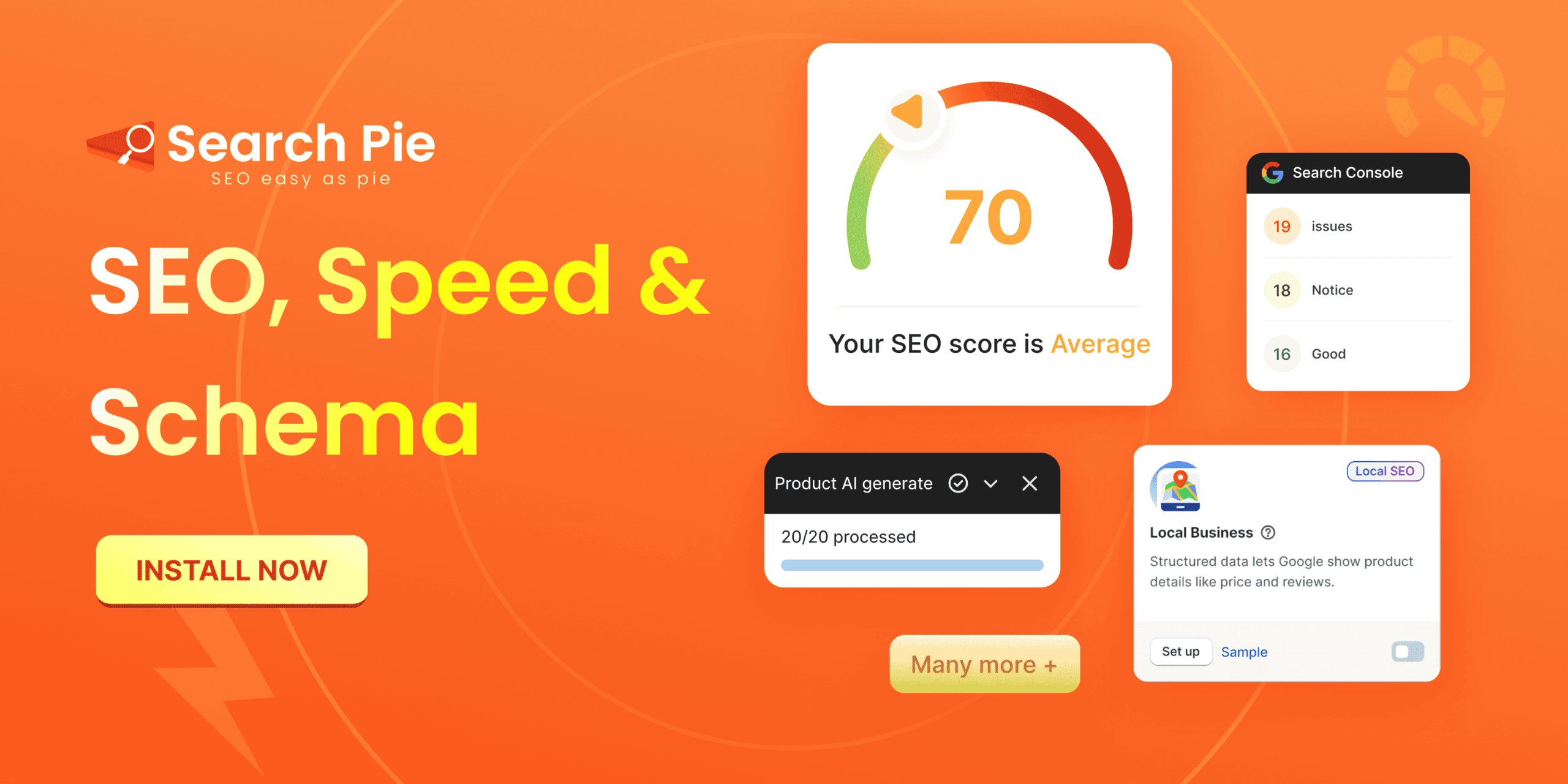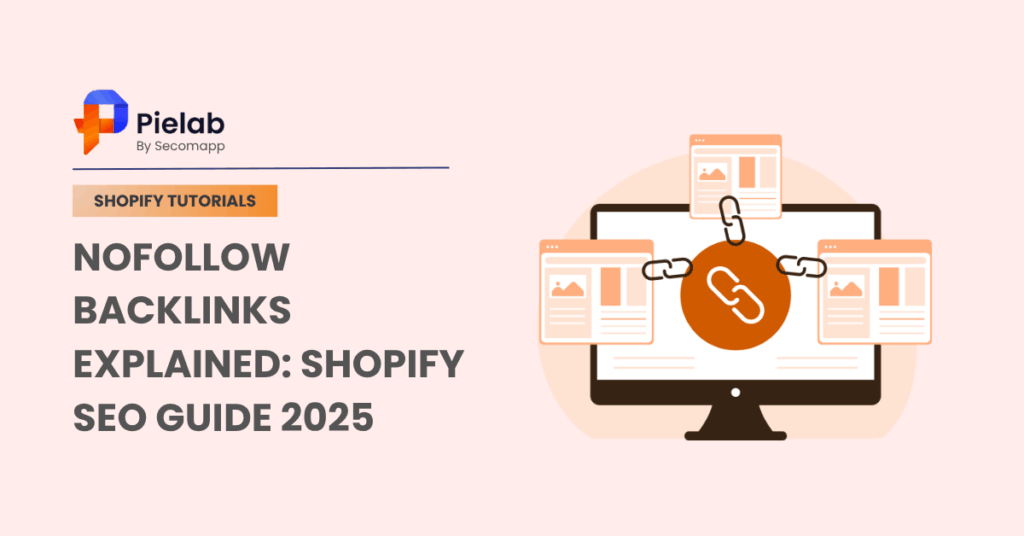If you’re managing a Shopify store or working on growing your eCommerce site, backlinks are one of the most powerful parts of SEO – but not all links are created equal.
Some links pass “SEO juice,” helping your pages rank higher. Others don’t – and that’s where nofollow backlinks come in.
In 2025, Google continues to evolve how it interprets link signals. Understanding the difference between nofollow and dofollow links can help you build a more natural, effective link profile that drives real results for your store.
In this guide, you’ll learn:
- What nofollow backlinks are and why they exist.
- How they affect SEO (and still add value).
- How to use rel=”nofollow”, rel=”sponsored”, and rel=”ugc” correctly.
- Proven strategies to get value from nofollow backlinks.
How tools like SearchPie: SEO, Speed & Schema help Shopify merchants manage backlinks efficiently.
Let’s start with the basics.
What Are Nofollow Backlinks?
A nofollow backlink is simply a link that tells Google, “Don’t pass ranking authority to this page.”

This tag was introduced by Google in 2005 to fight spammy link-building tactics – especially in blog comments and forums.
Here’s what one of the nofollow backlinks looks like in HTML:
<a href=”https://example.com” rel=”nofollow”>Example Link</a>
When Google’s crawlers see rel=”nofollow”, they can still crawl the link, but they won’t count it as a direct ranking signal.
In short, nofollow backlinks don’t transfer PageRank – but they still serve important purposes in your SEO strategy.
Difference Between Nofollow and Dofollow Backlinks
The simplest way to understand this difference is to think about link equity, also called “link juice.”
Dofollow backlinks help improve your search ranking because they tell Google that other websites trust your content.
Nofollow backlinks, on the other hand, are often used when you want to reference a source but not vouch for it directly – for example, linking to a product review site or sponsored content.
Both are necessary for a natural backlink profile. Having only dofollow backlinks can look suspicious to Google, while a healthy mix signals authenticity.
When Should You Use Nofollow Backlinks?

Even though nofollow links don’t directly boost your rankings, there are specific situations where using them is important:
Sponsored and Affiliate Links
If you’re working with influencers, affiliates, or sponsored posts, you should always mark those links as nofollow or sponsored.
This helps you stay compliant with Google’s guidelines and avoid penalties.
User-Generated Content (UGC)
Forums, comments, and product reviews often include external links from users. Applying a nofollow tag protects your site from spam or low-quality backlinks.
External Links You Don’t Fully Trust
If you reference a source that you’re unsure about (e.g., unverified third-party data), add a nofollow tag as a precaution.
To Maintain a Natural Profile
Mixing nofollow links in your backlink profile shows Google that your link growth is organic and balanced.
Difference Between Nofollow, Sponsored, Ugc
Not all “nofollow-type” attributes mean the same thing.
Here’s how to use each correctly:
Pro Tip: Google treats these attributes as “hints,” not absolute directives. Using them correctly helps maintain transparency and protects your store from algorithmic penalties.
Do Nofollow Backlinks Help SEO?

The short answer: Yes, indirectly.
Google updated its stance in 2020 – nofollow links are now treated as a “hint” rather than a strict command. That means search engines might still use them for discovery and indexing.
Here’s how nofollow links can still support your SEO goals:
Brand Visibility
Even if a link doesn’t pass ranking value, it can drive traffic and awareness. For Shopify merchants, this can lead to new customers or PR mentions.
Referral Traffic
Links from Reddit, YouTube, or Medium might be nofollow – but they often bring highly engaged visitors who can convert.
Indexing & Entity Recognition
Nofollow links can still help Google understand your brand’s context – especially when they appear on trusted, high-authority sites.
So, while they don’t boost rankings directly, they absolutely contribute to your overall SEO ecosystem.
Common Mistakes to Avoid

Managing backlinks is an ongoing process, and small mistakes can hurt your performance over time. Here are some pitfalls to avoid:
Overusing Nofollow Tags
Some store owners use nofollow for all outbound links. That’s unnecessary and can limit your authority sharing with trusted sources.
Ignoring Internal Linking
Don’t use nofollow for internal links. Your internal structure helps Google understand which pages are most important.
Not Labeling Sponsored Content Properly
Google requires sponsored or affiliate links to include rel=”sponsored” or rel=”nofollow”. Forgetting this can lead to ranking penalties.
Skipping Regular Backlink Audits
Links decay over time. If you don’t monitor for lost or broken backlinks, you may lose valuable authority without realizing it.
How To Use Nofollow Backlinks with Ahrefs
Firstly, you need to check your backlink analysis with all backlinks you built so far. Use tools like Ahref, SearchPie, Semrush to simplify your process.

With Ahrefs, you can check and monitor your backlinks’ status. See every page linking to your target in the detailed Backlinks report. Use powerful filters to dive deeper:
- Link type (“dofollow” / “nofollow”)
- Platform
- Domain Rating (DR)
- URL Rating (UR)
- Referring domains
- Etc
How SearchPie Helps You Manage and Optimize Backlinks on Shopify
Backlink management doesn’t have to be complicated – especially if you’re running your business on Shopify.
SearchPie: SEO, Speed & Schema is an all-in-one Shopify SEO app designed to simplify technical SEO and backlink optimization.

Here’s how it helps:
Backlink Audit & Monitoring
SearchPie helps you analyze which websites are linking to your store and whether those links are nofollow or dofollow. This ensures your backlink profile stays balanced.
Link Health Alerts
Detects broken or lost backlinks that could hurt your rankings and lets you fix them fast.
Internal Link Optimization
The app highlights internal linking opportunities to strengthen link equity across your pages – an often-overlooked SEO factor.
Technical SEO Boost
With built-in schema markup, page speed optimization, and metadata management, SearchPie makes sure your store’s foundation supports your link strategy.
Key takeaway: A smart backlink strategy starts with clear visibility.
Tools like SearchPie give Shopify merchants the insights they need to maintain a strong, compliant SEO profile without spending hours in spreadsheets.
Best Practices for a Balanced Link Profile
Whether you’re building backlinks through PR, influencer outreach, or organic mentions, keep these best practices in mind:
1. Mix Nofollow and Dofollow Links
Both types of links are essential for a natural, trustworthy link profile.
2. Focus on Relevance
Links from industry-related blogs or Shopify partners carry more SEO weight than random unrelated sites.
3. Audit Your Backlinks Regularly
Use SearchPie or Google Search Console to check for toxic or broken links.
4. Create Link-Worthy Content
Write in-depth guides, product comparisons, or tutorials that naturally attract backlinks from blogs and media sites.
5. Monitor Competitor Backlinks
Tools like Ahrefs or SEMrush let you track how your competitors are earning their best links – and find similar opportunities.
Conclusion
Nofollow backlinks might not pass SEO authority, but they play a critical role in building trust, visibility, and balance within your link strategy.
In 2025, Google’s algorithms look beyond single ranking factors – focusing more on authenticity and overall user value.
For Shopify merchants, this means building a diverse, transparent backlink profile is more important than ever.
Use tools like SearchPie: SEO, Speed & Schema to:
- Audit your backlinks easily.
- Maintain a healthy link ratio.
- Strengthen your technical SEO foundation.
Remember: SEO success isn’t just about chasing dofollow links – it’s about creating content and relationships that people (and Google) trust.


Beet pulp shreds vs pellets � compare fiber, storage, and feeding convenience.